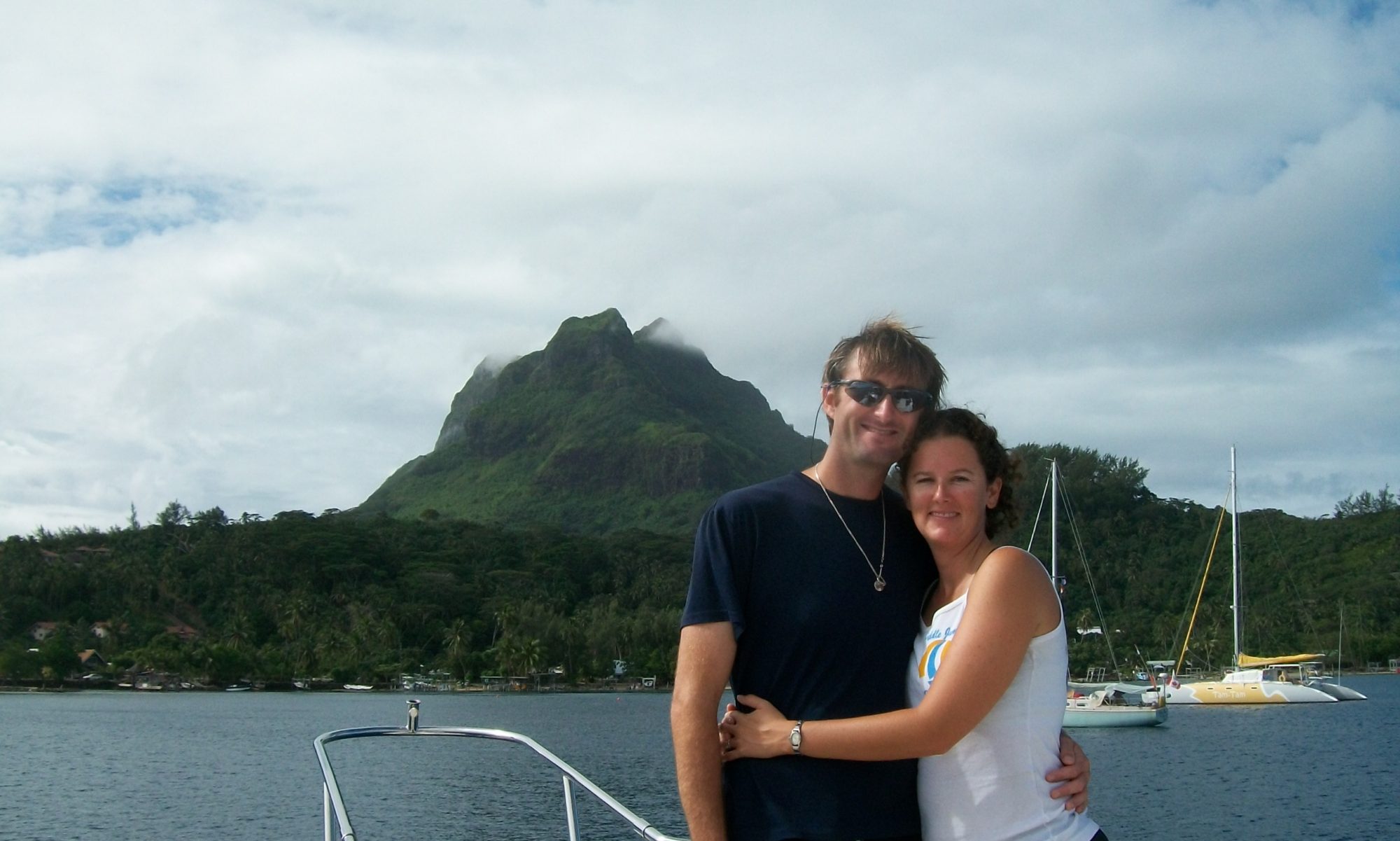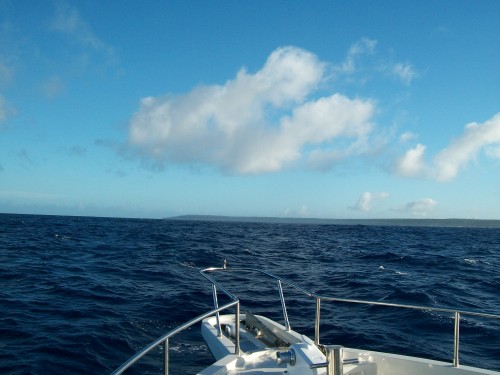At sea enroute Tonga
All that was left to do in Niue was to go shopping to restock our boat for the voyage to the next island chain. We have found that the simple day to day things, like shopping, can often provide keen insight into the difference between the island way of life and our own.
We get underway a bit sobered this time. You see, the reason we had the opportunity to help the whale research team is because the boat that originally volunteered capsized when it was sailing to Niue from the islands of Tonga. The crew was rescued but the boat is still out there – upside down, unlit and floating just above the waterline. This is the exact same patch of ocean we are sailing over right now.
This is also not the first boat to meet an untimely end that we are aware of. Some of you will recall the boat that was struck by a whale in a storm off of Mexico and sank during the Baja Ha-Ha rally from San Diego. In addition to the above capsizing, we are aware of at least one other boat from our Puddle Jump group that went down. We’re happy to report in all three of these instances all hands were rescued and are safe at this time.
The lesson we take away from this is that there is an unavoidable fact of life at sea: we’re not safe because going out on the ocean is not the safest thing in the world to do. But then, driving a car isn’t either. Neither is flying or residing in about 90% of the habitable places on the planet. In the end, it’s living. Living can be a very dangerous business but the alternative isn’t very much fun.
Different sailors deal with this fact in different ways. Some choose to ignore the danger and many go a long way with that. Ultimately though, they are leaving their lives up to little more than chance. Good chances granted (3 out of over a hundred boats isn’t bad) but chance none the less. Some decide the risk and expense aren’t worth the payoff and choose not to go; which we can respect. We are reminded of what our friend Allan once told us he learned as a pilot, “honor the threat.” In other words the sea can kill you so treat it with respect. Understand the risk you are taking, do everything reasonably in your power to mitigate that risk then evaluate and if you choose to do so, proceed in full knowledge and caution.
So the risk of death at sea exists and there is a lot we can do to mitigate that. Having accurate and updated local charts along with GPS navigation, using a RADAR, receiving a weather map via radio fax every day, having a short range and long range radio backed up by an onboard satellite phone with numbers for the US Coast Guard Rescue centers, travelling with a buddy boat that checks up on us, having a inspected life raft set and ready to deploy, wearing life vests at night on watch, never ever being underway without having someone on watch and most importantly having a tested working EPIRB. As our rescue pilot friend told us “have it = you live, have it not = you die.”
There is a risk out here and there is a heck of a lot of easy things you can and should do to lower that risk and protect yourself should the worst happen. One of the reasons no one died in any of the above disasters was because they were prepared. Some of our friends…and mothers…and friends who also happen to be mothers…are constantly reminding us to be safe. To which Greg oft replies, “I’m pretty sure we left safe behind when we decided to swim across the equator.”
So we know we aren’t safe – that’s why we’re careful and prepared instead. In the end, that’s probably a lot “safer” then most people on this planet are.
Want to know more about life at sea? Check out one of our other voyages by clicking on “3 Miles Straight Down”
About the authors
Greg and Tiffany are traveling around the world on sailing yachts and keep a video blog of their (mis)adventures. If sailing to Tahiti on a 44 ft sailboat, getting pooped on by seagulls, opening coconuts with dull machetes, sailing past tornadoes and ukulele Christmas carols are for you, then check them out at www.CoastGuardCouple.com!



Remember the 57′ cat Anna capsized between Niue and Tonga last year. The 2 man crew was rescued. The wreck washed up in Tonga, was towed inshore, and loaded on a ship.
Yeah, that’s what made us write about this. It’s scary to think that it can happen, even to people who know what they’re doing out there!